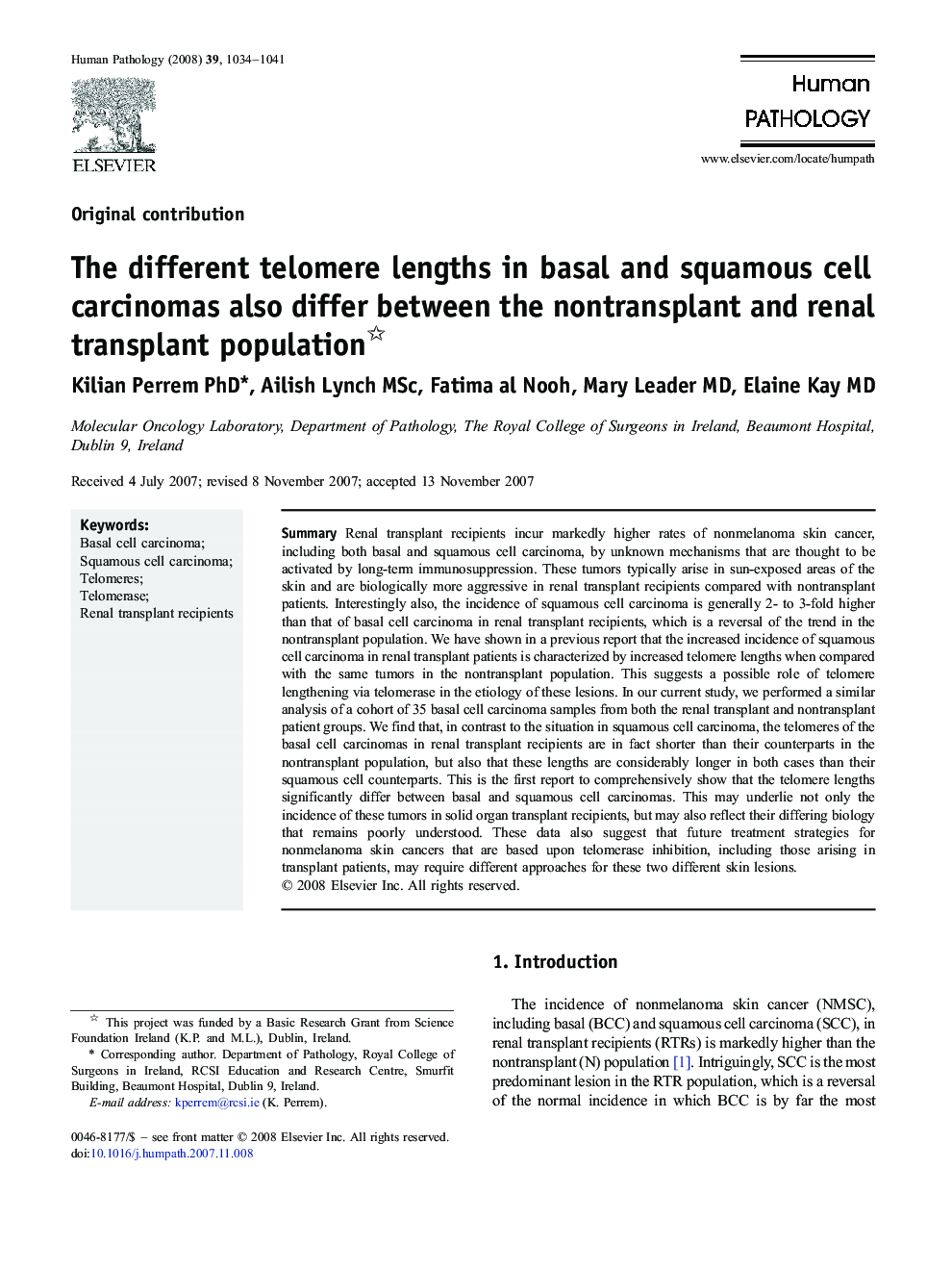| Article ID | Journal | Published Year | Pages | File Type |
|---|---|---|---|---|
| 4134575 | Human Pathology | 2008 | 8 Pages |
SummaryRenal transplant recipients incur markedly higher rates of nonmelanoma skin cancer, including both basal and squamous cell carcinoma, by unknown mechanisms that are thought to be activated by long-term immunosuppression. These tumors typically arise in sun-exposed areas of the skin and are biologically more aggressive in renal transplant recipients compared with nontransplant patients. Interestingly also, the incidence of squamous cell carcinoma is generally 2- to 3-fold higher than that of basal cell carcinoma in renal transplant recipients, which is a reversal of the trend in the nontransplant population. We have shown in a previous report that the increased incidence of squamous cell carcinoma in renal transplant patients is characterized by increased telomere lengths when compared with the same tumors in the nontransplant population. This suggests a possible role of telomere lengthening via telomerase in the etiology of these lesions. In our current study, we performed a similar analysis of a cohort of 35 basal cell carcinoma samples from both the renal transplant and nontransplant patient groups. We find that, in contrast to the situation in squamous cell carcinoma, the telomeres of the basal cell carcinomas in renal transplant recipients are in fact shorter than their counterparts in the nontransplant population, but also that these lengths are considerably longer in both cases than their squamous cell counterparts. This is the first report to comprehensively show that the telomere lengths significantly differ between basal and squamous cell carcinomas. This may underlie not only the incidence of these tumors in solid organ transplant recipients, but may also reflect their differing biology that remains poorly understood. These data also suggest that future treatment strategies for nonmelanoma skin cancers that are based upon telomerase inhibition, including those arising in transplant patients, may require different approaches for these two different skin lesions.
